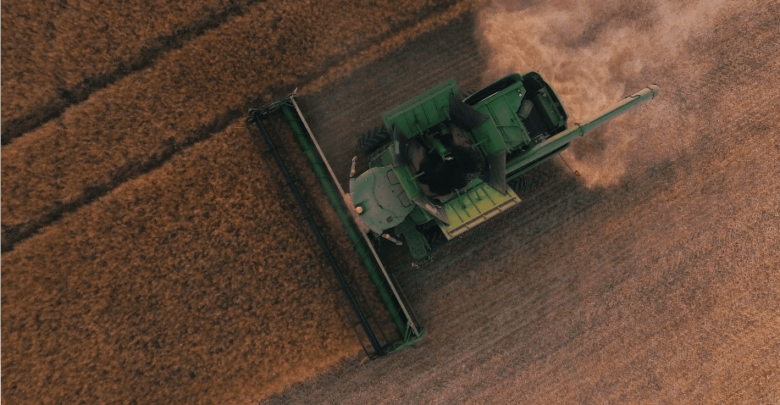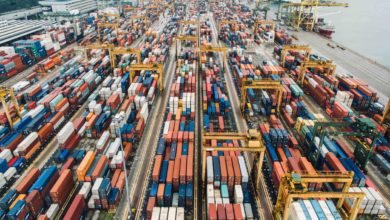Trade
Agriculture could be inching towards a (much needed) digital revolution

As discussed in a previous article, global agriculture is currently mired in antiquated trade practices. The industry has largely failed to transform its traditional operations by modernising and embracing digitisation. As a result, farmers are annually hemorrhaging capital to intermediaries, like law firms, who can sort through stacks of paper and decipher the legal validity of apparent verbal contracts.
The transparency of the agriculture supply chain is one specific component of the industry that would undoubtedly benefit from a digital transformation. Naturally, when supply chain documentation is limited to the private records of farms and firms, all participants suffer from the lack of transparency. From consumers to intermediaries, to farm owners and farm labourers, a single and accessible record of a product’s journey along the supply chain would surely be a welcome introduction to the industry.
As a consumer, I would certainly benefit from knowing exactly where the food I am buying comes from. A few examples of why transparency is a good thing immediately spring to mind: when going grocery shopping, if I had a full understanding of on what farm or on what plantation, and where, my products were originating, I could actively support the farms and plantations that I favour most, rather than the companies distributing the goods. In turn, with the public eye turned towards them, farms would be incentivised to produce a higher quality product, and intermediaries would be incentivised to reward those farms working to provide the highest quality products to the market.
In addition, agriculture suffers from the reality that 10% of people get food poisoning annually, according to the WHO. Everyone knows how unpleasant the symptoms of food poisoning can be. But even more frighteningly, food contamination is a serious and extreme issue, that results in over 420,000 deaths a year (again, a WHO statistic).
Fortunately, there are a number of startups that are currently working towards the digitisation of the agriculture supply chain, which could prove an indication of things to come. Blockchain technology is at the forefront of the innovation, as the distributed ledger technology offered by blockchain could serve to give broader access and a higher degree of organization to supply chain records.
In Wyoming, ranchers are already relying on a blockchain-powered supply chain once their beef goes to market. Beefchain.io is a startup with the aim of giving consumers the capacity to know which meat in the market comes from their preferred ranchers in Wyoming.
As we’ve seen, the UK government has conducted a trial run using blockchain in a slaughterhouse. All the related data was recorded on the decentralised ledger and is easily accessible by the permissioned participants of the slaughterhouse and the Food Standards Agency (FSA).
Also, the Australian startup Agridigital has begun applying the same logic to that country’s grain industry, giving consumers and stakeholders alike the ability to track grains as they move through the value chain. The company also stands out because of its efforts to facilitate transactions, through blockchain technology, which it promises it can do with more efficiency than traditional payment methods.
So, it appears that agriculture may be inching towards a profound era of digitisation. If that is the case, blockchain technology could be at the centre of innovation, especially when it comes to the renewal of the supply chain.
Image by: Scott Goodwill
Did you find this article helpful? Don’t hesitate to share on Facebook and LinkedIn to let your network know!



I appreciate, result in I found exactly what I used to be looking for. You have ended my 4 day lengthy hunt! God Bless you man. Have a nice day. Bye
I am constantly invstigating online for posts that can aid me. Thx!
isotretinoin 40mg over the counter buy accutane 40mg generic zithromax brand
With every little thing which appears to be developing within this specific subject matter, a significant percentage of points of view tend to be fairly refreshing. Having said that, I appologize, but I do not subscribe to your entire strategy, all be it exhilarating none the less. It would seem to me that your comments are generally not completely justified and in simple fact you are yourself not even totally confident of your argument. In any event I did enjoy looking at it.
order generic cialis 10mg sildenafil 100mg brand tadalafil tablet
Well I sincerely liked reading it. This subject provided by you is very helpful for good planning.
Wow! Thank you! I permanently wanted to write on my site something like that. Can I take a portion of your post to my site?
In this grand design of things you secure an A+ with regard to effort. Exactly where you actually misplaced us was first in the details. As it is said, details make or break the argument.. And that couldn’t be much more correct in this article. Having said that, let me reveal to you just what did deliver the results. The article (parts of it) is actually incredibly engaging and that is possibly the reason why I am making the effort in order to opine. I do not really make it a regular habit of doing that. Next, despite the fact that I can easily see a jumps in reasoning you make, I am not confident of how you seem to unite your ideas which make your conclusion. For now I shall subscribe to your issue however wish in the future you link your dots much better.
Thankyou for this grand post, I am glad I discovered this site on yahoo.
I got what you mean ,saved to favorites, very nice internet site.